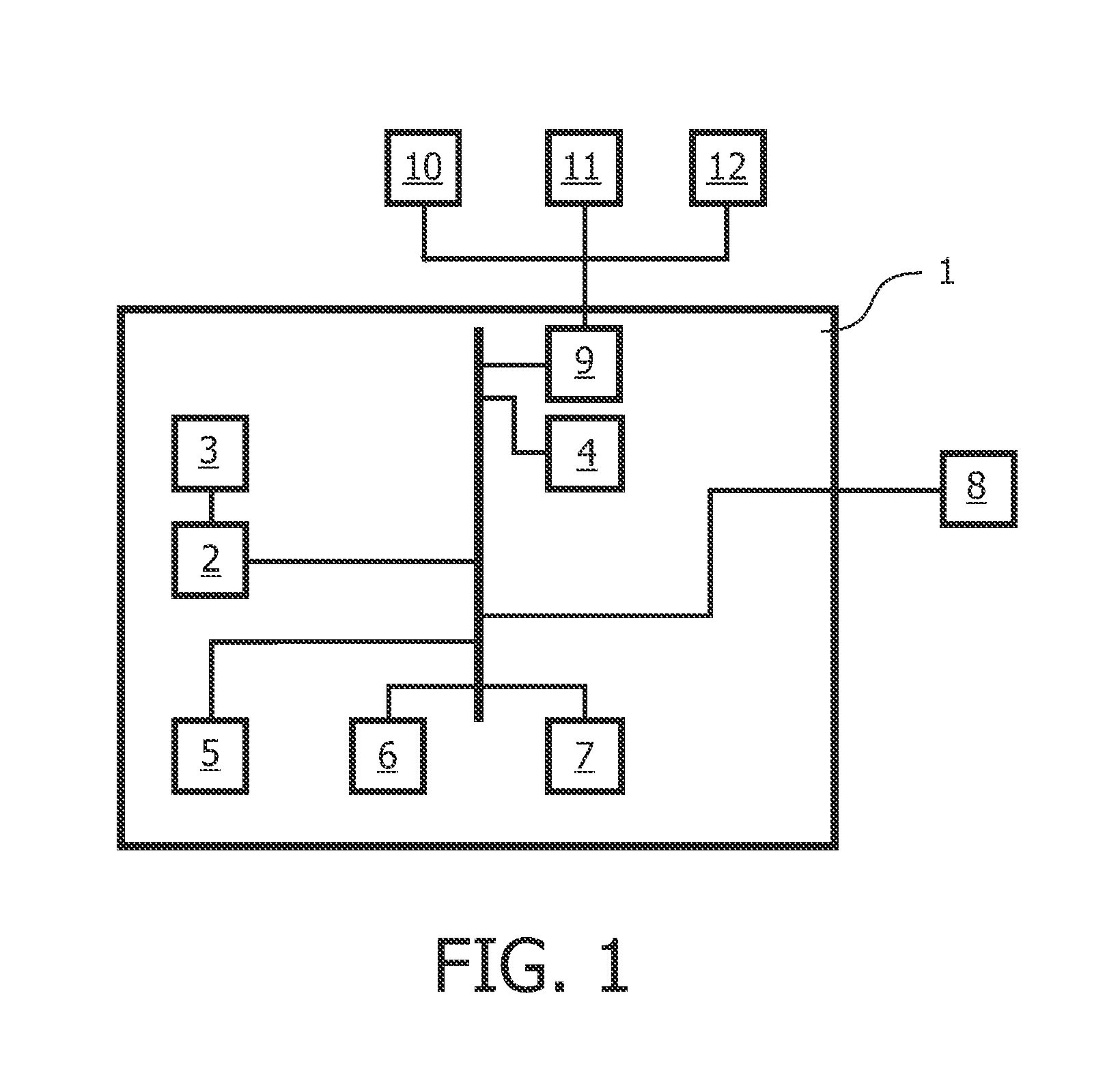Controlling an influence on a user in a rendering environment
- Summary
- Abstract
- Description
- Claims
- Application Information
AI Technical Summary
Benefits of technology
Problems solved by technology
Method used
Image
Examples
embodiment 1
Home Theatre System
[0083]In this embodiment, a home theatre system that includes Ambilight and haptic feedback (through a number of small vibromotors in the user's chair) is envisaged. Ambilight is a lighting technology that allows the emotionally adaptive system 1 to change the ambient lighting conditions, in particular according to the results of an analysis of the audiovisual content being rendered simultaneously. Thus, in this embodiment, the external devices 10,11,12 include lighting devices and tactile feedback devices of the kind mentioned above.
[0084]In this application context, the user is expected to sit in a chair, in front of a television. Therefore, the devices 8 for capturing emotion data may be integrated into the chair (e.g. measuring the user's posture, skin temperature and respiration patterns) and television (e.g. a camera that captures the user's facial expressions and pupil diameter). The two user reports “this is too much system feedback” and “this is too littl...
embodiment 2
[0094]The embodiment described below has been built and tested in detail by the applicants. The computer game Pac-Man is used as an example embodiment.
[0095]The player (call him Jack) sits in a chair, in front of a display device 7 in the shape of a Personal Computer monitor, and plays Pac-Man using the input device 5 (keyboard). Therefore, many emotion signals can be used such as posture, skin temperature, facial expressions, pupil diameter, mouse- and keyboard pressure, etc. The two user reports “this is too much system feedback” and “this is too little system feedback” can be implemented by any pair of keys (of the keyboard) that are not used in the actual game. In this example, the [up] and [down] key of the keypad are used.
[0096]As shown in FIGS. 5 and 6, the speed S of the game (i.e. the speed of all objects that move) is used as the system feedback parameter to be adapted. In Pac-Man, the game speed S is a variable with levels between 1 (slowest) and 100 (fastest...
PUM
 Login to View More
Login to View More Abstract
Description
Claims
Application Information
 Login to View More
Login to View More - R&D
- Intellectual Property
- Life Sciences
- Materials
- Tech Scout
- Unparalleled Data Quality
- Higher Quality Content
- 60% Fewer Hallucinations
Browse by: Latest US Patents, China's latest patents, Technical Efficacy Thesaurus, Application Domain, Technology Topic, Popular Technical Reports.
© 2025 PatSnap. All rights reserved.Legal|Privacy policy|Modern Slavery Act Transparency Statement|Sitemap|About US| Contact US: help@patsnap.com



